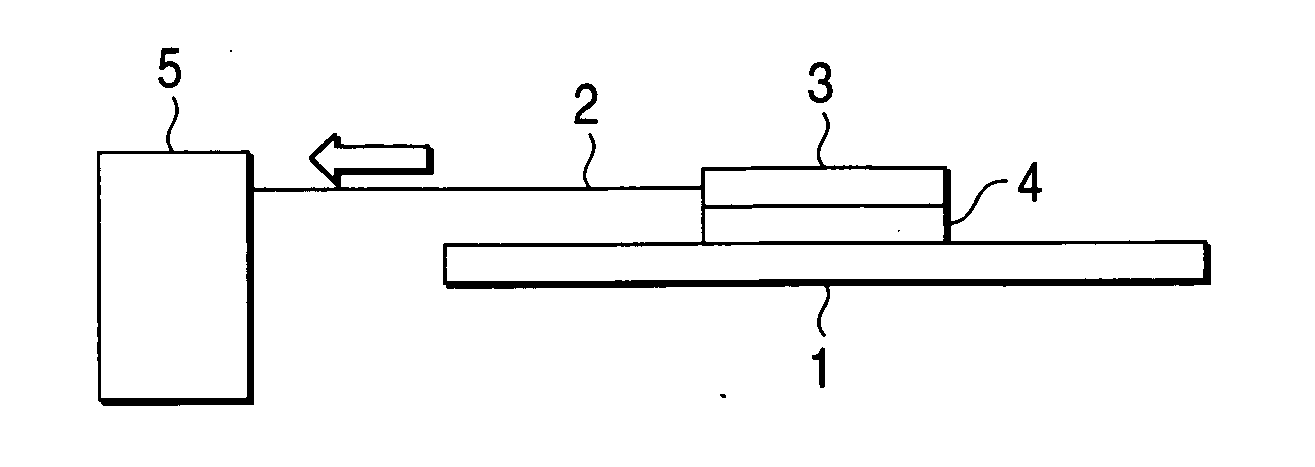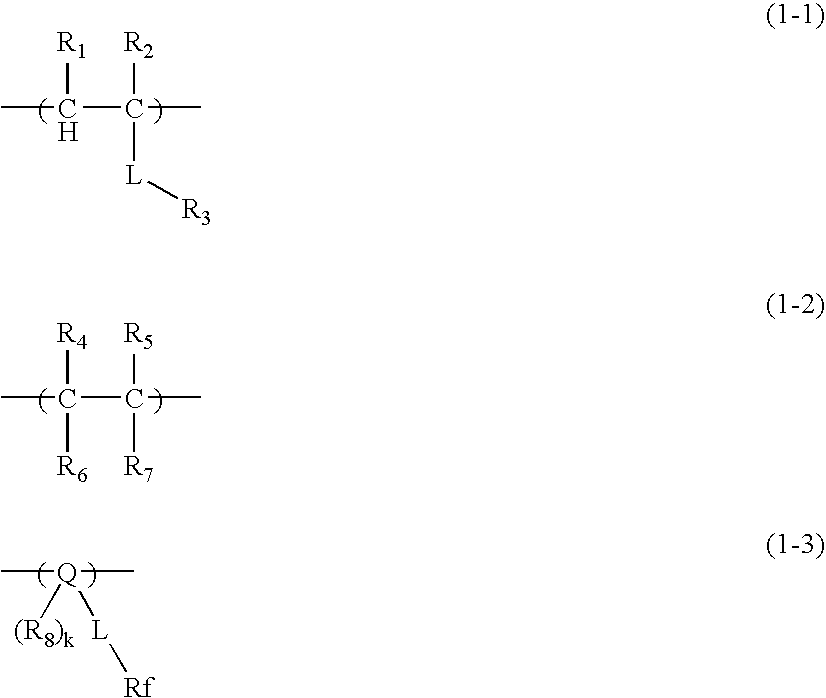Positive resist composition and pattern forming method using the same
a composition and resist technology, applied in the direction of photomechanical equipment, instruments, photosensitive materials, etc., can solve the problems of failure to meet the rectangularity of the fine pattern profile after development, the difficulty of stabilizing the production cost or quality of the apparatus and materials, and the failure of the acquisition of the exposure equipment, etc., to achieve good followability of water
- Summary
- Abstract
- Description
- Claims
- Application Information
AI Technical Summary
Benefits of technology
Problems solved by technology
Method used
Image
Examples
synthesis example 1
(Synthesis of Resin (15))
[0455] Monomer-1, Monomer-2 and Monomer-3 represented by the structural formulae below were charged at a ratio (by mol) of 50 / 20 / 30 and dissolved in PGMEA (propylene glycol monomethyl ether acetate) / PGME (propylene glycol monomethyl ether)=7 / 3 (by mass) to prepare 450 g of a solution having a solid content concentration of 15 mass %. To this solution, polymerization initiator V-601 produced by Wako Pure Chemical Industries, Ltd. was added to a concentration of 1 mol %. In a nitrogen atmosphere, the resulting solution was added dropwise over 6 hours to 50 g of a mixed solution of PGMEA (propylene glycol monomethyl ether acetate) / PGME (propylene glycol monomethyl ether)=7 / 3 (by mass) heated at 100° C. After the completion of dropwise addition, the reaction solution was stirred for 2 hours. After the completion of reaction, the reaction solution was cooled to room temperature and crystallized from 5 L of a mixed solvent of hexane / ethyl acetate=9 / 1, and the whi...
synthesis example 2
(Synthesis of Resin (C-1-1))
[0460] Methyl α-trifluoromethacrylate and norbomene were charged at a ratio of 50 / 50 (by mol) and dissolved in propylene glycol monomethyl ether acetate to prepare 450 g of a solution having a solid content concentration of 22 mass %. To this solution, polymerization initiator V-601 produced by Wako Pure Chemical Industries, Ltd. was added to a concentration of 5 mol %. In a nitrogen atmosphere, the resulting solution was added dropwise over 2 hours to 50 mL of propylene glycol monomethyl ether acetate heated at 80° C. After the completion of dropwise addition, the solution was stirred for 2 hours to obtain a reaction solution. After the completion of reaction, the reaction solution was cooled to room temperature and crystallized from a 10-fold amount of a mixed solvent of hexane / ethyl acetate=90 / 10, and the white powder precipitated was collected by filtration to recover the objective Resin (C-1-1).
[0461] The compositional ratio (by mol) of Resin (C-1-...
synthesis example 3
(Synthesis of Resin (C-9))
[0463] A 1,1,2-trichloro-trifluoroethylene 150 ml solution containing 57.6 g (0.20 mol) of 2-hexafluoropropanyl-(5-norbornene)-2-carboxylate was charged in a 1 L-volume autoclave, and the system was pressurized to 200 psi in a nitrogen atmosphere. Furthermore, 20 g (0.20 mol) of tetrafluoroethylene was poured thereinto, and the mixture was heated at 50° C. under stirring. In this reaction solution, a 1,1,2-trichloro-trifluoroethylene 15 ml solution containing 1.2 g of di(4-tert-butylcyclohexyl)peroxydicarbonate was poured over 20 minutes, and the stirring was further continued for 20 hours. After the completion of reaction, the reaction solution was charged into 2 L of methanol while vigorously stirring to precipitate Resin (C-9) as a white powder.
[0464] The obtained Resin (C-9) was measured by gel permeation chromatography (GPC) and found to have a weight average molecular weight of 15,000 and a dispersity of 2.7. Also, the polymer compositional ratio de...
PUM
| Property | Measurement | Unit |
|---|---|---|
| Percent by mass | aaaaa | aaaaa |
| Percent by mass | aaaaa | aaaaa |
| Temperature | aaaaa | aaaaa |
Abstract
Description
Claims
Application Information
 Login to View More
Login to View More - R&D
- Intellectual Property
- Life Sciences
- Materials
- Tech Scout
- Unparalleled Data Quality
- Higher Quality Content
- 60% Fewer Hallucinations
Browse by: Latest US Patents, China's latest patents, Technical Efficacy Thesaurus, Application Domain, Technology Topic, Popular Technical Reports.
© 2025 PatSnap. All rights reserved.Legal|Privacy policy|Modern Slavery Act Transparency Statement|Sitemap|About US| Contact US: help@patsnap.com



